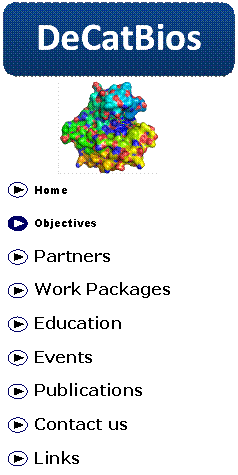|
Objectives |
|
The DeCatBios project will apply a multi-disciplinary approach relying on enzyme engineering, structural biology and biocomputing to obtain knowledge about the structure and function of Glutathione transferases (GSTs, EC 2.5.1.18) and to apply this knowledge to: (a) design and evolve improved detoxifying activities towards triazine and chloroacetanilide herbicides, and (b) to generate novel thermostable GST variants with pH optimum at the acidic range. Protein engineering efforts will be realized using: (i) in vitro directed evolution approach employing the family of tau class GSTs from two different plants that is induced following herbicide treatment, and (ii) paleoenzymology approach by resurrecting functional ancestral GST enzymes.
In particular, the DeCatBios project seeks to:
· Explore the wide catalytic diversity of tau class GSTs for the development of novel catalytic bioscavengers and bioremediation tools useful in the fight against herbicide toxicity. · Develop efficient methods for the creation laboratory-generated detoxifying catalytic diversity. · Evolve new GST-based detoxifying activities towards toxic triazine and chloroacetanilide herbicides using ‘family’ forced molecular evolution of tau class GSTs. · Resurrect functional ancestral GST enzymes. · Investigate of the structural and physicochemical properties of engineered and resurrected enzymes, using different biophysical approaches. These results will provide essential information on understanding the genetic, structural, and biophysical mechanisms that caused the GSTs detoxification functions to evolve. · Develop bioremediation enzymes for eco-efficient and environment-friendly technologies and provide tools for industry to improve sustainable development beyond what could normally be achieved using conventional chemical technologies.
|


